Yudanaka: Onsen, Ryokan and Snow Monkeys
We were getting a little travel weary from our Japanese explorations, not that we were bored, it’s just our ageing muscles we’re throbbing from the long hours of walking and hiking that we’d been enjoying. We decided a couple of days recuperation and relaxation were in order, before we headed back to Tokyo to complete our visit to Japan. Our choice was Yudanaka, a small village nestled in the Nagano prefecture in the Japanese Alps.
The Journey to Yudanaka
From Tokyo the Nagano Shinkansen gets you to Nagano in just over an hour and a half, from here you have to catch a local private Nagano Electric Railway train onwards to Yudanaka. The fare is 1230 Yen – this journey isn’t covered by a Japan Rail Pass – and takes another 45 minutes as you wind your way up into the mountains.
The train is called the ‘Snow Monkey’ in honour of one of the main tourist attractions in these parts. As we emerged from Yudanaka station, we were reminded again as to the purpose of our visit, at the taxi rank, there is a very large sign declaring “Snow Monkey Taxis”. On the station steps, we were greeted by a local English speaking volunteer who gave us a map of the area and told us how to get to our hotel accommodation. Thankfully our place was just a one minute walk from the train station.
Staying in a Ryokan
Our room for our two night stay was to be at the Seifuso Ryokan.
Ryokan are traditional Japanese inns, which are normally run and managed as a family business. This was certainly the case with ours, the family had owned the ryokan for generations.
We were welcomed in by the son who spoke a little English, and his mother and father who spoke none. It didnt matter, the warmth of the welcome from everybody spoke volumes.
It was shoes off and slippers on as we entered the main building, as we were shown to our room upstairs. It was a shock, but a very big and good shock.
The majority of the hotel rooms, in Japan, that we’ve stayed in have been on the small side – you couldn’t have swung a mouse let alone a cat in some. Our room was of gigantic proportions. It consisted of two tatami mat rooms, one served as the sleeping/dressing area and the other had a sitting area complete with LCD TV, wireless internet and a safe. Two sliding doors opened to a view of the town and a small sink and seating area. It was perfect.
We settled in, had a cup of green tea which we are both quite partial to now, consuming at least a couple of cups a day. We donned our Yukata (like a Kimono only made of cotton) ready for our first ‘onsen experience’. The ryokan was built in the 19th century and had a selection of onsen for you to indulge in, all at various temperatures ranging from very hot to blisteringly hot. The choice of onsen available at our ryokan were both in indoor and outdoor settings. There was also a single sex onsen that was available to men and women separately at different times of the day, as it’s quite common in rural areas for men and women to bath together.
Relaxing in an Onsen
We decided on the outdoor onsen for starters, as it was the largest. The good news was it was empty, so we were spared the embarrassment of other guests hearing our cries as we dipped our toes in the hot natural spring waters. You undress in a room adjoining the onsen then take with you your small towel (about the size of a face cloth) which you use to wash yourself in public with a shower or using the buckets supplied with the onsen waters. All the bodily washing goes on here separate to the bath. Once you are squeaky clean, and soap suds free you can enter the bath. Onsen are for lounging, soaking and enjoying the reputed thereaputic properties of the water. Its just you as nature made you and the crystal clear natural hot spring waters, and whomever else is sharing the bath with you.
You will be thankful that we used the rock table in the middle of the Onsen bath to preserve our modesty and your sensibilities in this picture. It also served as a resting place for the warm saki that the owner brought to us not long after we had been in the baths. It was another lovely hospitable touch from the wonderful hosts at this ryokan.
That evening we went on a wander around the village and came upon the local foot bath onsen. You find these in many spa towns across Japan and they are available for use by the locals and tourists alike, they are normally near to the stations and are great for reinvigorating those tired feet.
We always try and eat some of the regional dishes wherever we are on our travels. After our relaxing foot bath we went off in search of some Nagano soba noodles which are a particular treat around these parts.
We found a nice little restaurant with the traditional seating and settled in to sample this local delight. They were served cold with a soy, dashi and mirin sauce in which you dip the cold noodles before eating, adding spring onion and wasabi to taste. Now this dish will not win any awards for its looks or presentation, but the taste is fantastic. The texture of the noodles is perfect and the sauce complements the taste of the buckwheat noodle perfectly.
We enjoyed the onsen some more, and felt very relaxed after our first day.
Kaiseki Dining in a Japanese Ryokan
In addition to our traditional Japanese lodgings, we decided that it would be here, that we would sample a traditional dinner and breakfast.
The traditional dinner in Japan is known as Kaiseki. This consists of a multi course meal (I think I counted thirteen courses) which is a veritable roller coaster ride for the tastebuds. You are presented with a table full of all small bowls and dishes with the most delicately prepared food. It seemed a shame to eat it, but that thought lasted about a minute as we tucked in.
Our Japanese hostess for the evening, who was about 70 years old and didn’t speak any English, looked after us during our meal. Setting out the cold dishes and then serving the ones that are cooked at the table in front of you, preparing tea and just generally tending to you whilst still managing to give you enough privacy to enjoy the dinner. She was also extremely helpful in explaining which of the sauces went with each of the dishes and what order in which they should be eaten. We liked her a lot.
The meal was both a dining and a cultural experience and we repeated the exercise again in the morning with a traditional Japanese breakfast. It was a similarly lavish affair, but at that time in the morning, we couldn’t really manage the six course breakfast.
The total cost of this dining experience was 3,000 Yen (£23) each for the dinner and 1,000 Yen (£8) each for the breakfast. Given the quality of this experience I consider that a bargain. Although we did exceed our nightly ‘flashpacking travel budget’ on our couple of nights here, so we’ve created a new budget code called ‘experience budget’ which is separate to our ‘travel & tours budget’. Don’t you just love creative accountancy?
Japanese Snow Monkeys
Apart from the Nagano Winter Olympics in 1998, skiiing, snowboarding and alpine trekking, hot springs and onsen, this region is famous for its snow monkeys. These monkeys live in the surrounding mountains and have long since learnt that the hot springs are not for the exclusive use of the humans and are not averse to lounging around in the hot waters on a cold winters day.
The mountain pools are about five kilometres away from Yudanaka. You can walk there or catch a bus or taxi from the village. Our wonderful hosts at the Ryokan dropped us off as far as a car can take you. Which is another lovely addition to their guest hospitality.
After you are dropped at the parking area, you have about a 2o minute walk across a gently rising track to get to the pools where the monkeys bathe. There is a small visitor centre and a fee to enter the park which no doubt helps with conservation efforts.
The monkeys are given small amounts of food each day by the rangers to keep them visiting the viewing pool, but they ensure that the monkeys do not become dependent upon this and continue to gather their own food in the surrounding mountains. It also keeps the monkeys away from town and interacting with the locals.
The visit to Yudanaka was John’s idea, as he really wanted to see the snow monkeys whilst we were in Japan. I thought we would do the visit rather quickly, pop in, take a few snaps and leave. The monkeys however have a charm of their own and you will find yourself getting engrossed in the monkey politics and turf wars as the dominant males and the cheeky teenagers vie for the best spots and food available in the pools. It was about an hour and half later, maybe longer, that we finally tore ourselves away.
It was a beautiful spring day, so we decided to walk back to Yudanaka through the surrounding village of Shibu and admire the views of the distant mountains and volcanoes. It was a great walk and we even found a little micro brewery tucked into one of the back streets of Shibu. John tried his best charm to get us a free tasting, but it didn’t work.
We were really sad to leave this area of Japan. The family at the Ryokan had made us feel very special with their hospitality, food and the delightfully rejuvenating onsens. On leaving the ryokan, they gave us a little monkey keyring each. The small team of hotel staff all stood at the door, bowed and waved us goodbye. It was quite moving.
If you come to Japan I’d recommend making time for a ‘ryokan experience’, for us it was one of the highlights of our trip to Japan so far.

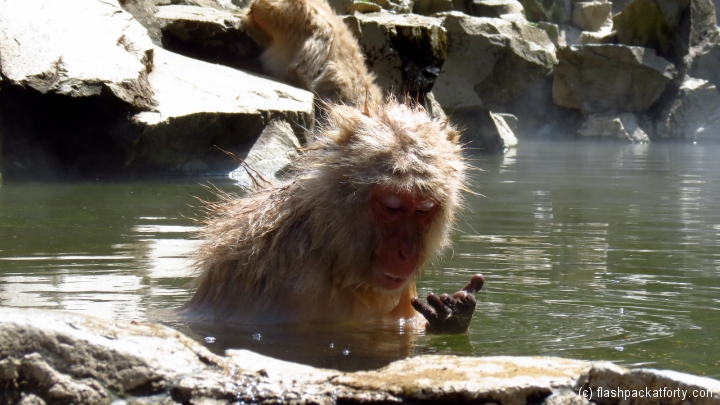
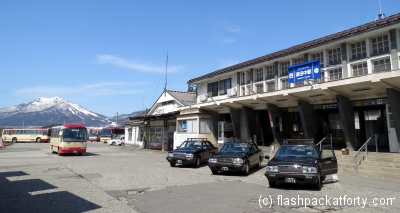
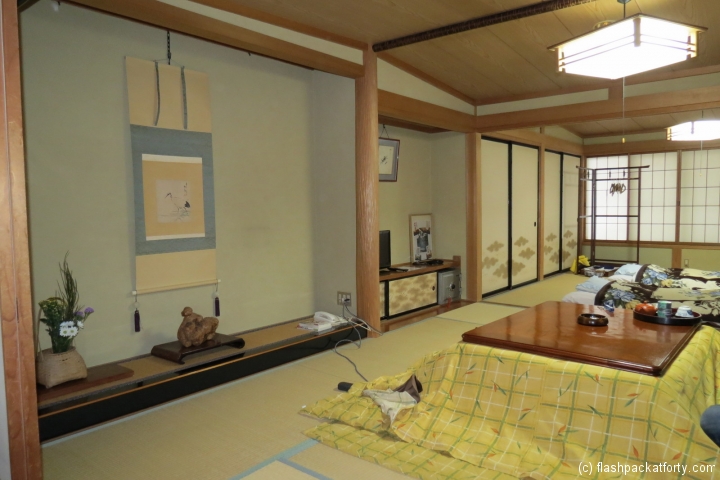
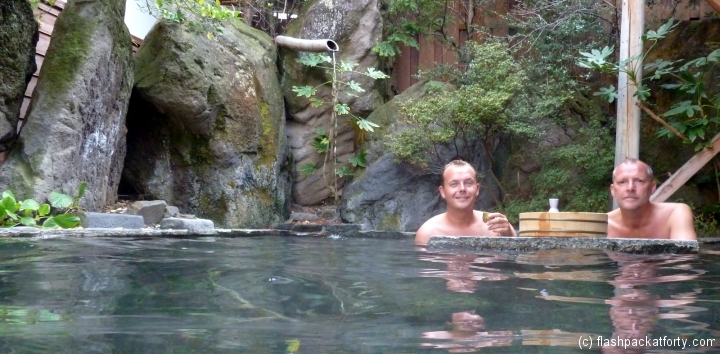
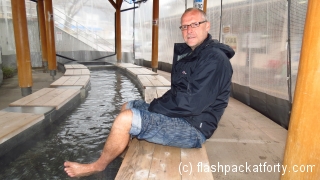
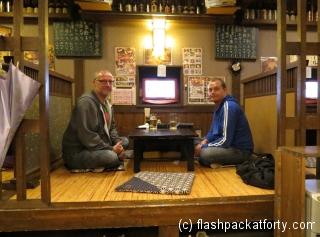
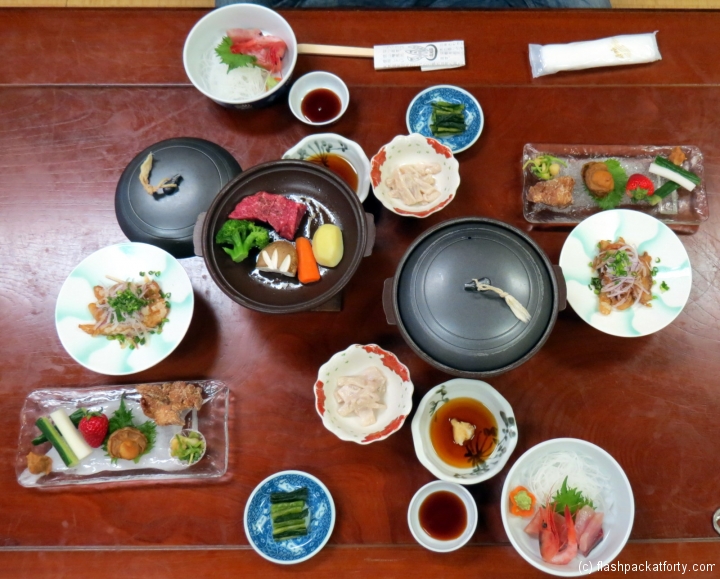
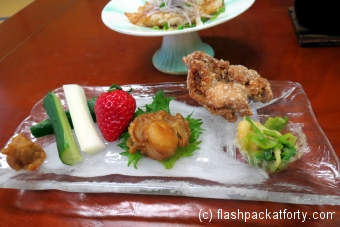
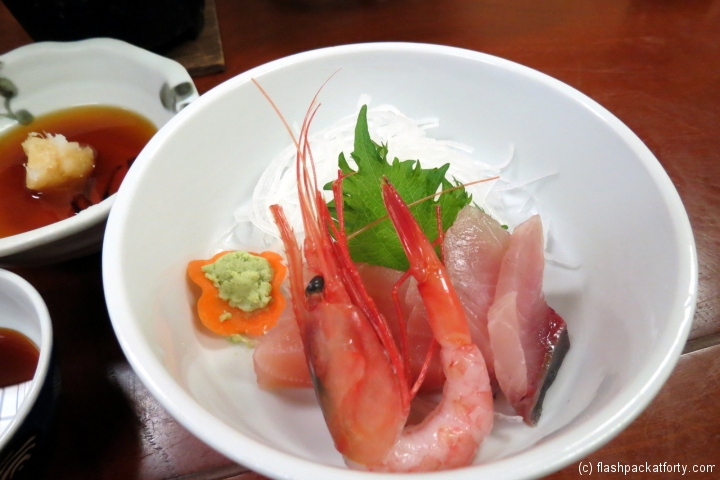
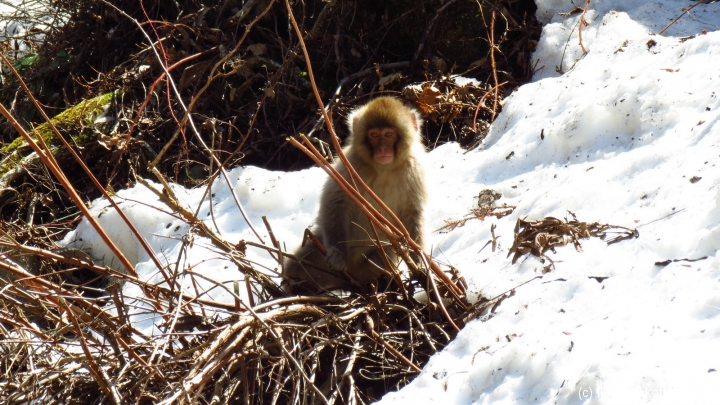
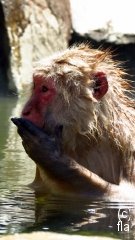
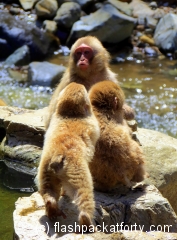

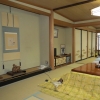

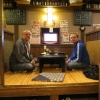
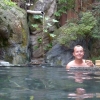
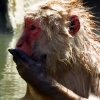
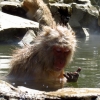
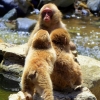
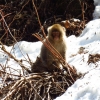


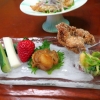
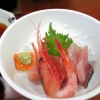
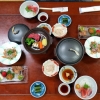

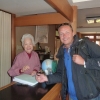
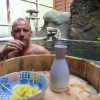

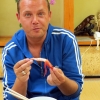
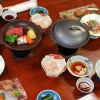
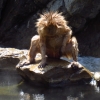

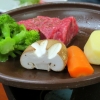
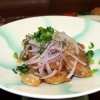
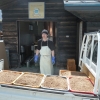


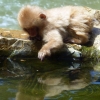
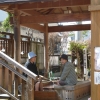

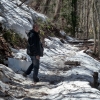
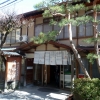
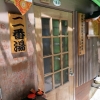
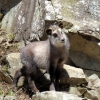
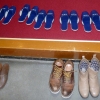
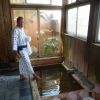



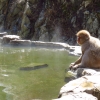
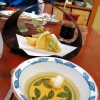
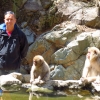
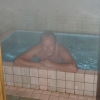
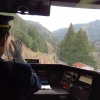



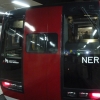






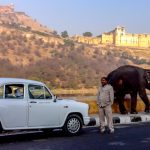
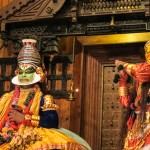






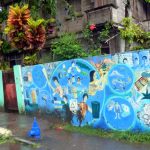
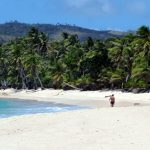
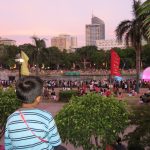
Those monkeys are real cute! Are they quite as temperamental as other monkeys are? Based on the monkeys I encountered in China, I became convinced that they’re evil and fairly vicious!
The monkeys were busy playing around with each other. They just stroll past you, going about their monkey business! If you like monkeys, I’m becoming a bit of a fan, we saw the smallest monkeys in the world in Bohol, now they were cute. We’ll be on our guard when we get to China.
Love the idea of an “experience budget”! I’m using that excuse next trip I go on. Great shots of the snow monkeys too!